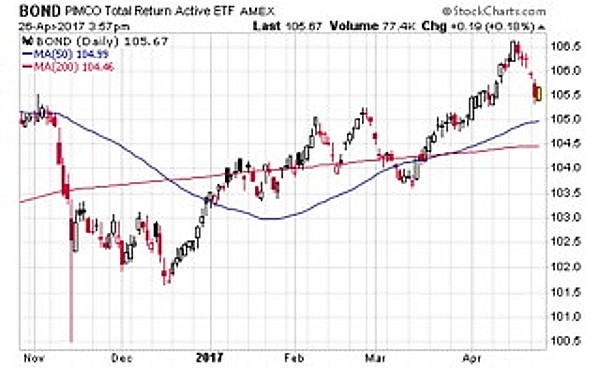We largely believe the push lower in rates is a result of institutional investors buying volatility protection in the face of what could prove to be an interesting summer, explains David Fabian, ETF specialist and editor of Flexible Growth & Income Report.
If rates do begin to tick up later in the year, we wouldn’t be surprised to see a 3% clip on the 10-Year Treasury Note Yield.
While our raw interest rate exposure is very low, the jury is still out on how that might begin to affect high yield with spreads now at razor thin levels.
Our thought is that while emerging market bonds could continue to perform well alongside equities, our positions in domestic high yield in holdings such as the PIMCO Income Strategy Fund II (PFN) or the Blackrock Credit Allocation Fund (BTZ) could fare a little differently.
In a supportive credit environment, the risk isn’t that high yield bonds will go down, instead the risk is greater they will just cease to add value, and start to present more risk if volatility rises.
Nevertheless, our core holding in the PIMCO Total Return Bond ETF (BOND) continues to significantly outperform its peer group and add a steady level of income to the model portfolio.
The flexible approach to governing the underlying holdings in BOND has struck just the right mix of credit and interest rate sensitivity during this phase of the market cycle.
Subscribe to David Fabian's Flexible Growth & Income Report here…



















